The Currency of Paraguay: Understanding the Guaraní
Introduction
When I first arrived in Paraguay, one of the most interesting parts of daily life was getting acquainted with the local currency: the Guaraní. Named after the indigenous Guaraní people, this currency isn’t just a medium of exchange—it’s a reflection of Paraguay’s rich culture and history.
Whether you’re planning to explore the vibrant streets of Asunción, invest in Paraguayan real estate, or simply enjoy a leisurely vacation while obtaining your residency in Paraguay, understanding the currency of Paraguay is a good step in making the most of your experience.
In this article, I’ll walk you through the story behind the Guaraní, explore the current currency and bills in the country, and provide insights into its value when converted to USD.
We’ll also look at the challenges posed by inflation and the fluctuations that shape the currency’s strength. Whether you’re a traveler looking to budget for your trip, an expat settling into life in Paraguay, or an investor exploring the region’s opportunities, this guide is your go-to resource.
The History and Origin of the Guaraní
The Guaraní, Paraguay’s official currency, was introduced in 1944, replacing the Paraguayan peso. Its adoption marked a significant shift in the country’s financial system, aimed at modernizing the economy and aligning it with post-war global trends.
The name “Guaraní” was chosen to honor the indigenous people who have long been central to Paraguayan identity, symbolizing resilience and cultural pride.
As I held my first Guaraní banknote, I couldn’t help but admire its intricate design, showcasing Paraguay’s heritage with portraits of historical figures and landmarks. It’s more than just money—it’s a piece of art that tells a story.
🌍 My Top Credit & Fintech Recommendations
Top Personal Credit Card – Perfect for expats and nomads, even if you don’t have a U.S. credit score.
Best Business Credit Card for LLCs – A great starter card with easy approval and a generous sign-up bonus.
Top No-Fee International Bank Account – Open a global-friendly account with no monthly fees.
Best U.S. Fintech Business Bank Account – Access a U.S. business account and debit card, all online.
Top USD Account for Latin America-Based Nomads – A USD fintech solution that works seamlessly across LatAm.
Best Investment Platform for LatAm Residents – Start investing from almost any country with a remote-friendly setup.
Symbol and Code: ₲ and PYG
The Guaraní is denoted by the symbol ₲, which you’ll often see on price tags, restaurant menus, and street markets across Paraguay. Its international currency code, PYG, is what you’ll see when exchanging money or checking conversion rates online.
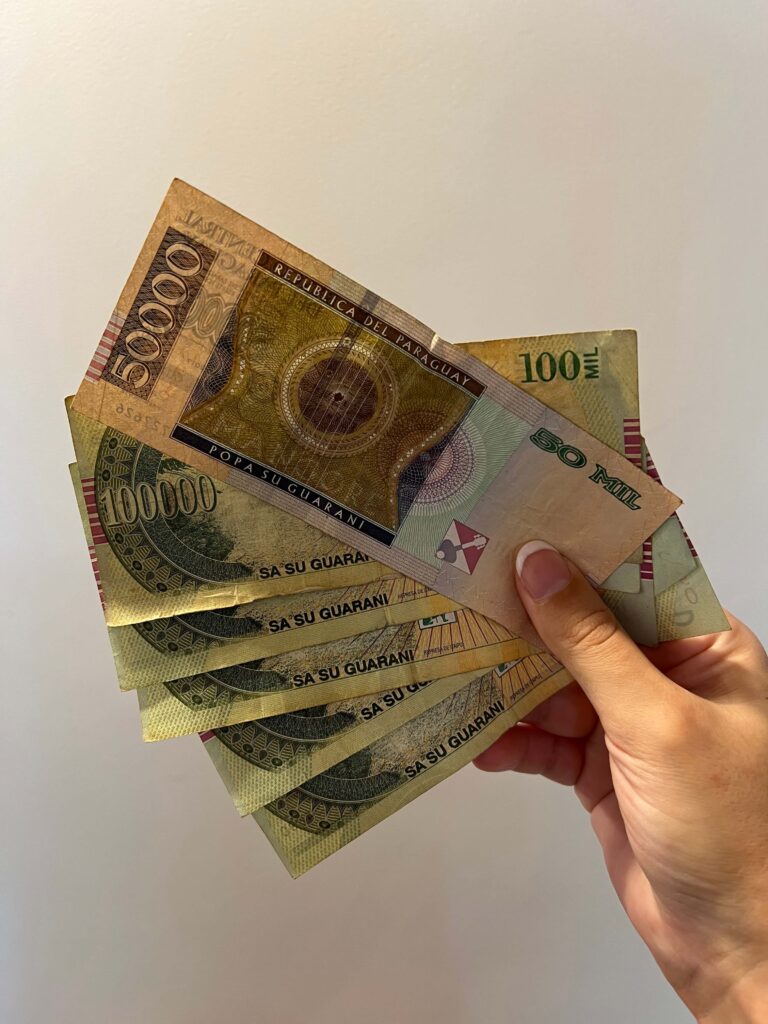
Paraguay’s Transition to the Guaraní
Before the Guaraní, Paraguay used the peso, a currency with roots in Spanish colonial times. However, the peso faced challenges such as instability and inflation, prompting the government to introduce the Guaraní as a more stable alternative. Over the decades, the Guaraní has become a cornerstone of Paraguay’s economic identity, weathering the ups and downs of political and economic shifts.
The Guaraní’s Role in Paraguay’s Economy
Today, the Guaraní plays a central role in Paraguay’s economy, which is largely export-driven. Agriculture, particularly soybeans and beef, forms the backbone of the country’s financial stability, influencing the value of the Guaraní on the global stage.
While the currency’s value has fluctuated over the years, its resilience reflects the steady growth of Paraguay’s economy.
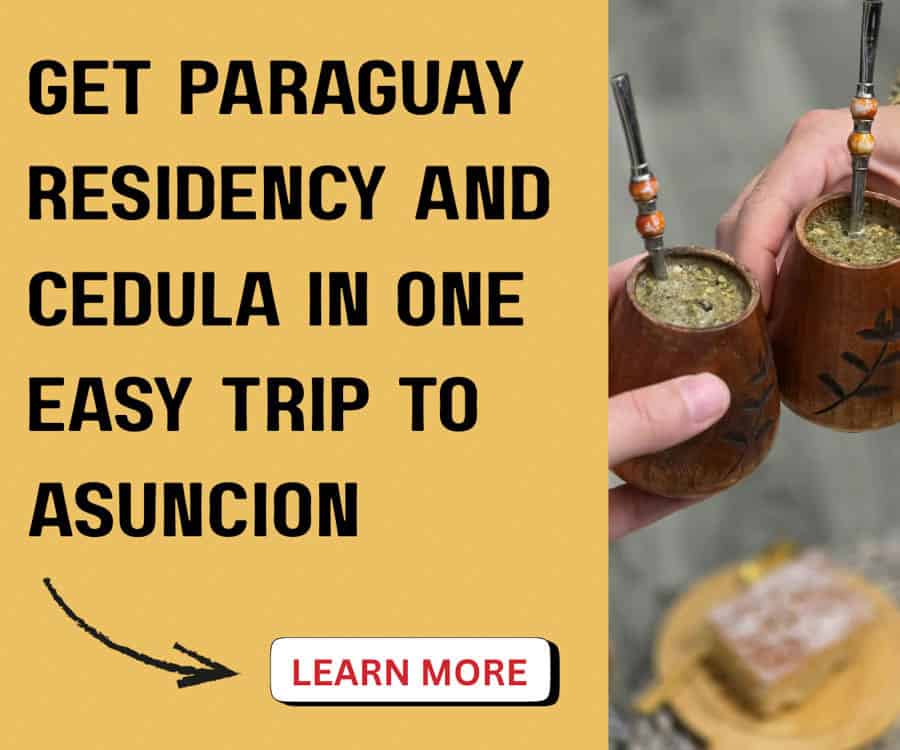
For travelers and expats, navigating life with the Guaraní means embracing a cash-centric culture, especially outside major urban centers. From bustling markets to small (but delicious and authentic!) roadside eateries, the currency of Paraguay remains an essential part in exploring the nation’s rich offerings.
Paraguayan Banknotes and Their USD Values
As you explore Paraguay, one of the first things you’ll notice is the colorful array of banknotes that make up the Guaraní. These banknotes are not only a means of transaction but also a reflection of Paraguay’s history and culture, each design telling a story about the nation’s identity.
Overview of Circulated Banknotes
Paraguay’s currency features six main denominations: ₲2,000, ₲5,000, ₲10,000, ₲20,000, ₲50,000, and ₲100,000. While coins are still in circulation, they are used sparingly, with most transactions being conducted using banknotes.
Design and Details of Each Banknote
- ₲2,000 (Approx. $0.26 USD):
This smallest denomination is practical for small purchases, like a quick bus ride or a cup of cocido (traditional Paraguayan tea). The design features indigenous motifs, showcasing Paraguay’s deep-rooted connection to its native heritage. - ₲5,000 (Approx. $0.65 USD):
Used frequently for small street food snacks, this vibrant banknote highlights the National Pantheon of Heroes in Asunción, a significant historical landmark. - ₲10,000 (Approx. $1.29 USD):
A favorite among locals for daily expenses, this note features José Gaspar Rodríguez de Francia, a key figure in Paraguay’s independence. - ₲20,000 (Approx. $2.57 USD):
This note’s design includes depictions of Paraguay’s lush landscapes, emphasizing the country’s natural beauty and its agricultural backbone. - ₲50,000 (Approx. $6.42 USD):
Often used for larger purchases, this note pays tribute to the architectural charm of the Palacio de los López, the presidential palace in Asunción. - ₲100,000 (Approx. $12.80 USD):
The highest denomination in circulation, this note is reserved for significant transactions. Its design features key historical figures and symbols, encapsulating the spirit of Paraguay’s resilience and pride.
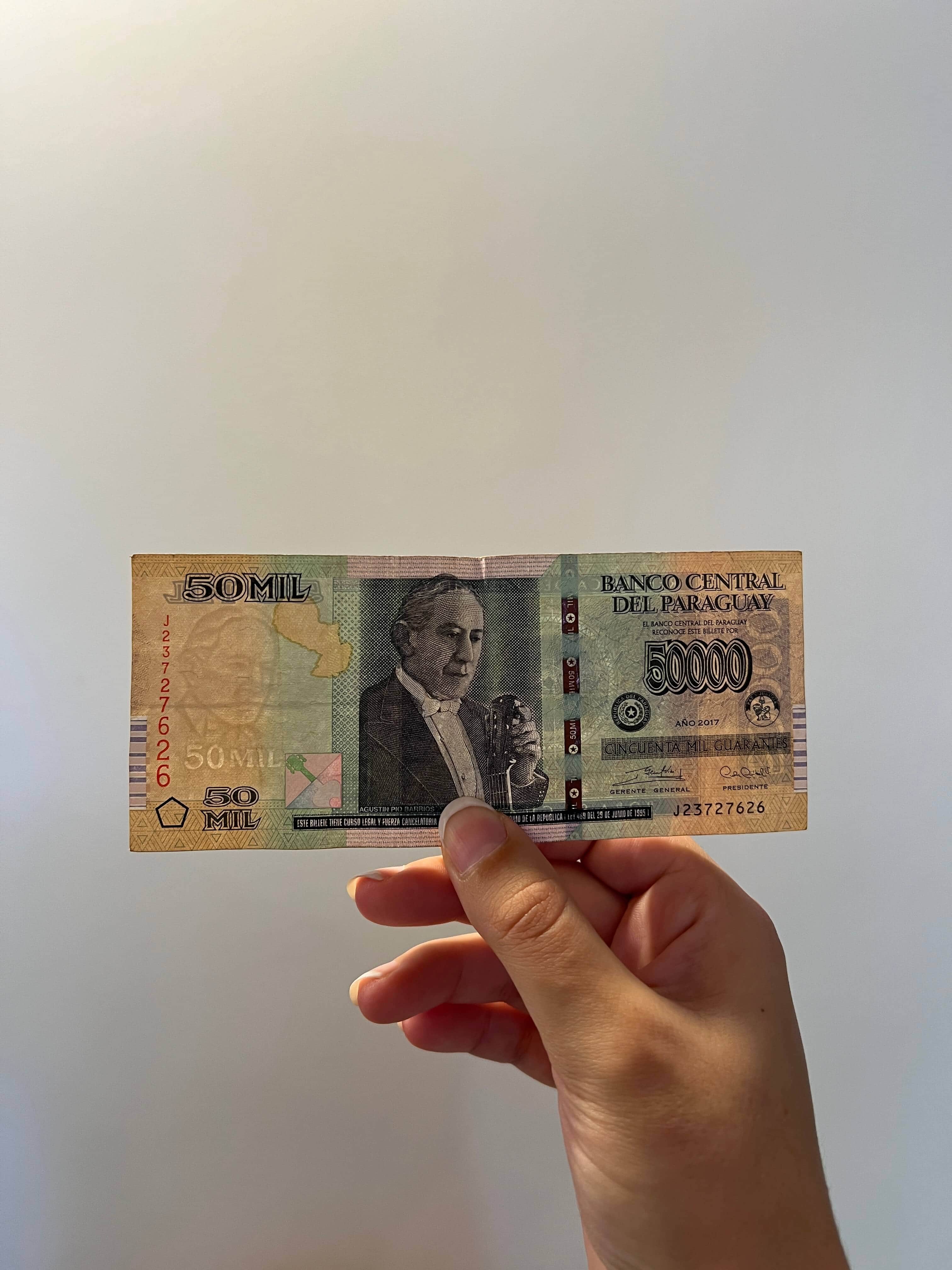
Coins in Circulation
Coins in Paraguay come in smaller denominations, such as ₲50, ₲100, ₲500, and ₲1,000. However, they are not as widely used as banknotes, especially in urban areas where prices rarely necessitate coins. In rural areas, coins might find more practical use but are still limited.
I personally try to spend as much as I can on my foreign credit cards when living in Paraguay. The reason for this is because when I spend in cash, I receive so many small coins that I never use again nor want to carry around with me. Over months and years, this adds up, so I prefer to simply use card and not lose money over time due to receiving many coins.
🌎 Ready to Go Global?
Explore smart strategies for residency, banking, and diversification in Latin America and beyond:
- ✅ Book a Strategy Consult – Get personalized guidance tailored to your global lifestyle.
- 🇵🇾 Paraguay Residency Essentials Program – Fast-track your second residency with low taxes and no minimum stay.
- 🇺🇾 Uruguay Residency Essentials Program – Discover this stable, scenic option for long-term relocation.
- 💳 U.S. Banking for Non-Residents – Open U.S. accounts and access credit even if you don’t live in the States.
🌐 For sovereign individuals and digital nomads building a borderless life.
Inflation in Paraguay
Paraguay’s economy has experienced moderate inflation rates over the past decade, typically hovering between 3% and 5% annually. While this might seem low compared to some neighboring countries, inflation still affects the purchasing power of the Guaraní, particularly for lower-income households.
During my time in Paraguay, I noticed that while the cost of essentials such as groceries and public transportation remains affordable, prices for imported goods tend to fluctuate more significantly due to currency devaluation and inflationary pressures.
I did however notice on my first visit to Paraguay in 2022 that while it is certainly an affordable destination, there are other countries in Latin America, such as Peru and Colombia, that I found more affordable, particularly when comparing supermarket prices.
I would not say that Paraguay is the most affordable country in LatAm, however it is certainly a very affordable country overall.
🌎 Ready to Go Global?
Explore smart strategies for residency, banking, and diversification in Latin America and beyond:
- ✅ Book a Strategy Consult – Get personalized guidance tailored to your global lifestyle.
- 🇵🇾 Paraguay Residency Essentials Program – Fast-track your second residency with low taxes and no minimum stay.
- 🇺🇾 Uruguay Residency Essentials Program – Discover this stable, scenic option for long-term relocation.
- 💳 U.S. Banking for Non-Residents – Open U.S. accounts and access credit even if you don’t live in the States.
🌐 For sovereign individuals and digital nomads building a borderless life.
Currency Fluctuations in Paraguay
Factors Influencing the Guaraní’s Stability
The currency of Paraguay, the Guaraní, is shaped by several internal and external factors. While relatively stable compared to some neighboring currencies, it is not immune to fluctuations, often driven by Paraguay’s economic and political environment.
- Export-Driven Economy:
Paraguay is heavily reliant on exports, particularly soybeans and beef, which account for a substantial portion of its GDP. Changes in global commodity prices directly influence the country’s economic health, subsequently affecting the value of the Guaraní. For instance, a dip in soybean prices can reduce foreign exchange inflows, leading to a weakening of the currency. - Global Market Trends:
Like many emerging market currencies, the Guaraní is influenced by global trends such as the strength of the US dollar, inflation in major economies, and fluctuations in oil prices. The currency tends to weaken when the dollar strengthens, making it more expensive to import goods. - Political Stability:
Paraguay has enjoyed relative political stability in recent years, bolstering investor confidence and maintaining a stable currency. However, moments of political uncertainty, such as election years or controversial policy changes, can cause short-term volatility.
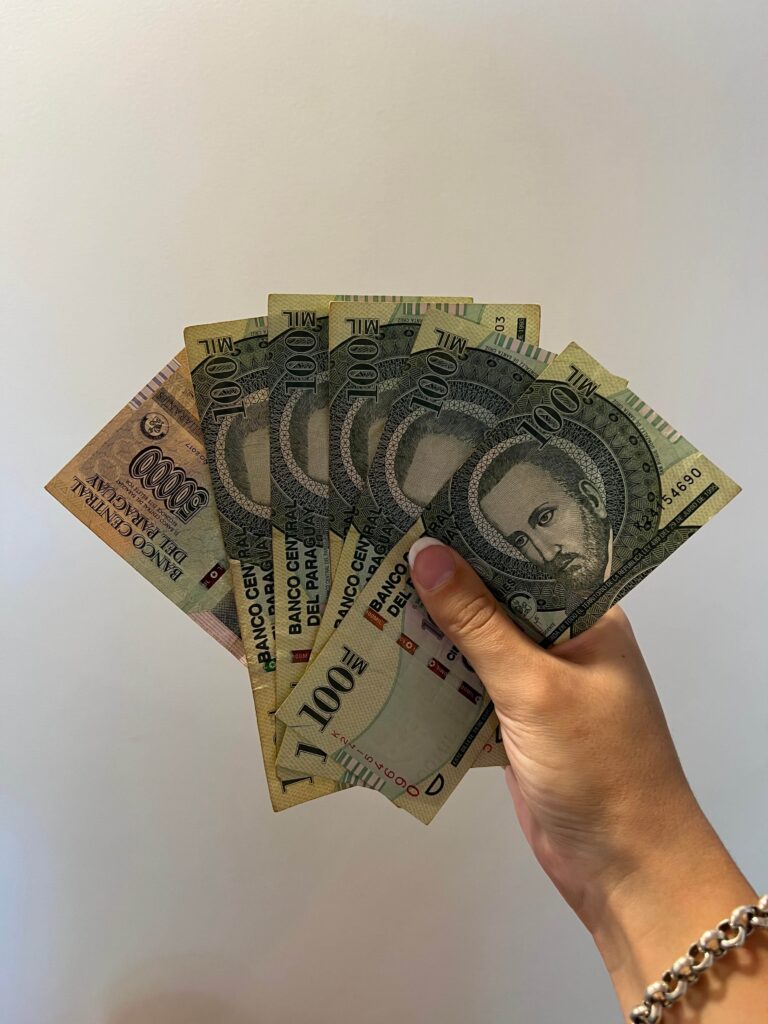
Significant Fluxes in Recent Years
One notable fluctuation occurred during the COVID-19 pandemic when the Guaraní weakened significantly as global demand for exports dropped, and economic activity slowed. Conversely, the recovery in 2021-2023 saw the currency regain some strength, driven by rising commodity prices and increased trade.
Experts anticipate that the Guaraní will remain relatively stable in the coming years, provided Paraguay’s export markets continue to perform well. However, risks such as global economic downturns, shifts in commodity prices, or extreme weather events affecting agriculture could disrupt this stability.
Exchanging Currency in Paraguay
- Banks:
Banks offer reliable exchange rates, but the process can be time-consuming. Be sure to carry your passport, as it’s often required for currency exchange. - ATMs:
ATMs are widely available in urban areas, dispensing Guaraní directly. Most machines accept international cards, though they may charge a small fee (usually around $5 USD). The exchange rates are typically fair, but it’s advisable to check with your home bank about fees before withdrawing cash. Keep in mind that you typically only withdrawal $200 USD per transaction, and it must be in local currency. - Money Exchange Services:
Licensed exchange offices (casas de cambio) are a quick and convenient option for exchanging money. They’re especially useful in tourist hotspots like Asunción and Ciudad del Este.
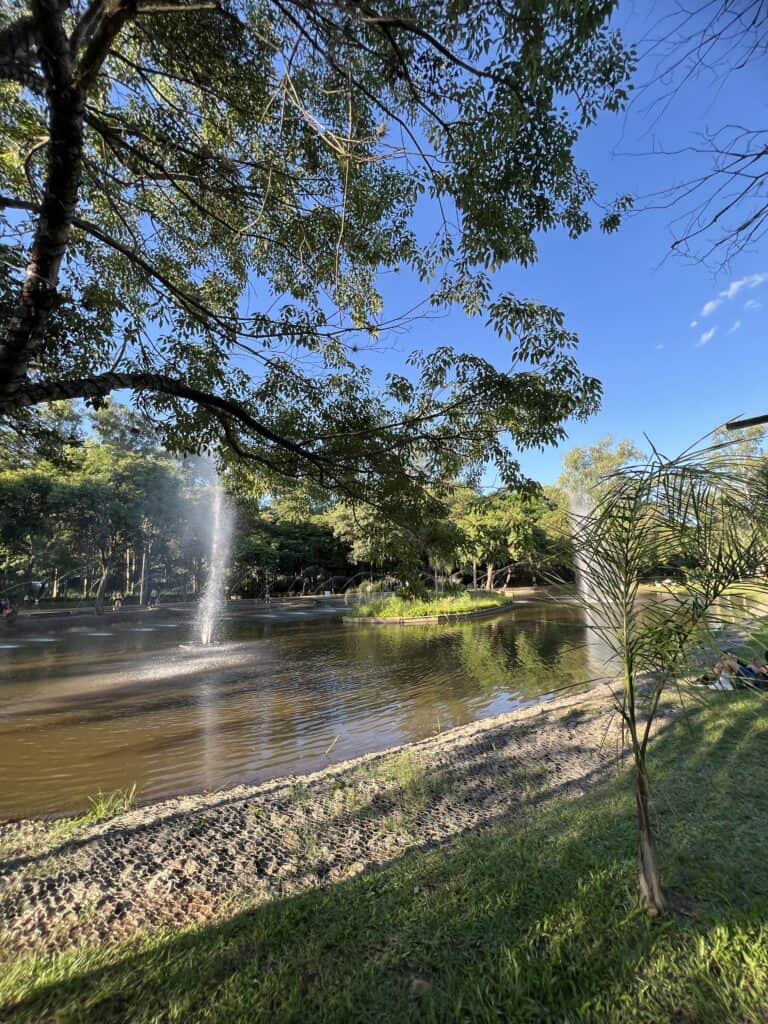
Carrying and Storing Cash
Paraguay operates largely as a cash-based economy, so carrying cash is essential, especially in rural areas where card payments may not be accepted. Here are some tips:
- Break down large bills into smaller denominations for easier transactions, as vendors often lack change for high-value notes, especially if you are shopping at the local markets like Mercado Cuatro
- Store cash securely in a money belt or hidden compartment, particularly when exploring crowded areas or markets.
Mobile Payment and Card Usage
Credit and debit cards are widely accepted in urban areas, particularly at hotels, restaurants, and larger stores. Visa and Mastercard are the most commonly used, and many stores even accept Amex.
However, smaller businesses and markets often operate on a cash-only basis, so always have some Guaraní on hand. Mobile payment apps like Pago Móvil are gaining popularity, but their usage is still limited compared to cash.
Many of the locals here in Paraguay do not have bank accounts, or don’t have bank accounts with high limits. You will find many locals opting to use cash in daily transactions, so be prepared with small denomination bills.
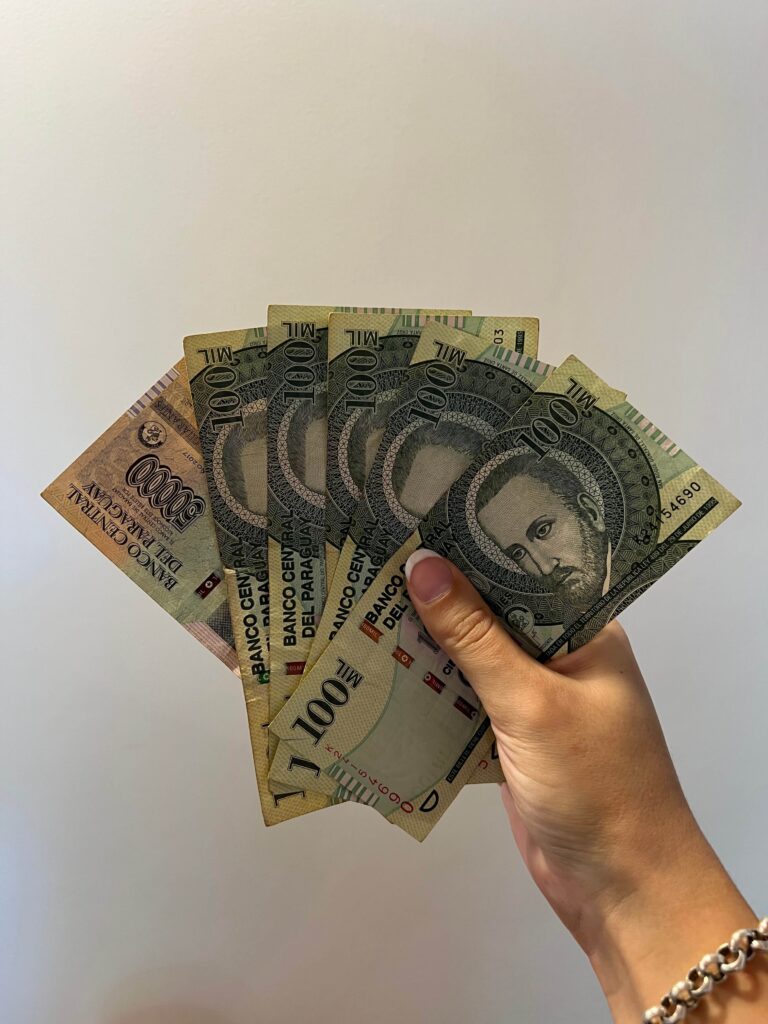
Prices in Guaraní
Here are some prices examples of what you can expect to pay for a standard service in Paraguay. I have lived in Paraguay for over a year, and have seen inflation in prices, in small amounts.
- A meal at a local restaurant might cost ₲50,000
- A bus ride within Asunción could be as low as ₲3,500
- A handcrafted souvenir at a market might range from ₲20,000 to ₲80,000
One of Paraguay’s most appealing aspects is its affordability. For a fraction of the cost of travel in other countries, visitors can enjoy world-class cuisine, cultural attractions, and natural wonders like Foz de Iguazu near Ciudad del Este.
From meals that cost less than a dollar to accommodation options that are wallet-friendly, Paraguay offers incredible value for money. This affordability makes it an increasingly popular destination for budget-conscious travelers.
Read More on Living in Paraguay: The Currency of Paraguay: Understanding the Guaraní- When is the best time visit Paraguay? Here’s your full guide for when to visit
- Food Prices in Paraguay and What To Expect Grocery Shopping
- Ready to Rent an Apartment in Paraguay? Here’s My Mistakes Of Apartment Renting
- Living in Paraguay? Is it really worth it?
- Full Guide to the Ins and Outs of Getting Residency in Paraguay
- My 16-Hour Sleeper Bus Experience from Brazil to Paraguay
Conclusion
The currency in Paraguay, the Guaraní, is more than just a medium of exchange—it’s a gateway to understanding the country’s economy, culture, and daily life. When you’re exploring the intricate designs of its banknotes, analyzing inflation trends, or navigating currency fluctuations, the Guaraní plays a central role in shaping your experience in Paraguay.
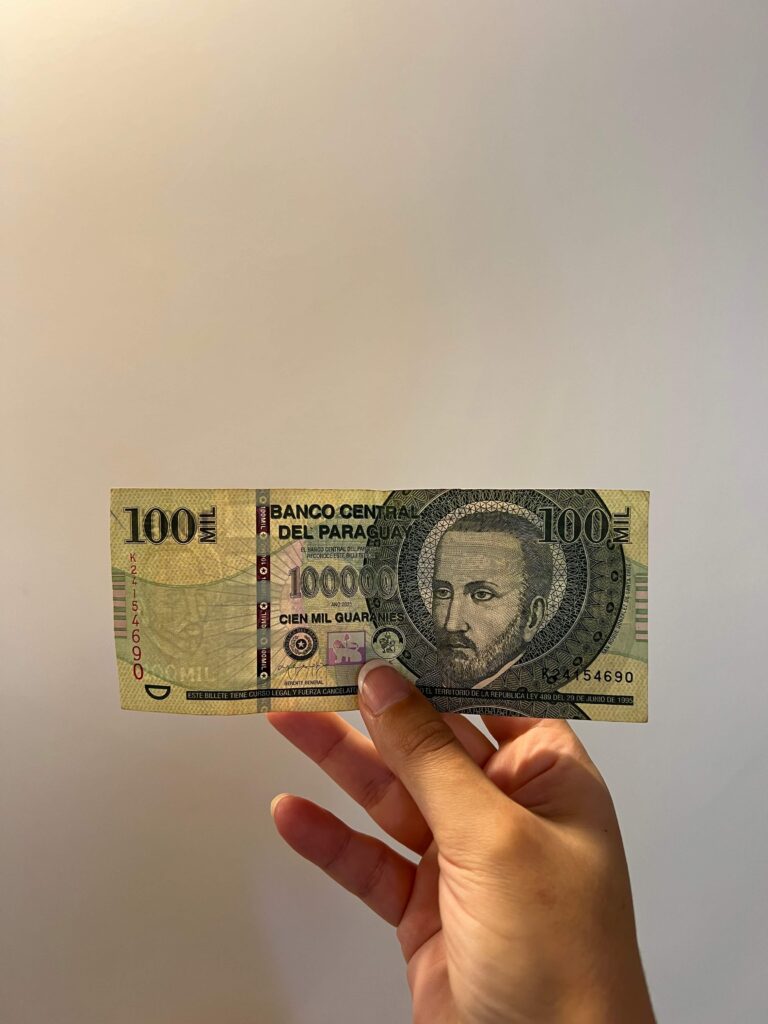
FAQ
The currency of Paraguay is the Guaraní, symbolized as ₲ and abbreviated as PYG.
The Guaraní comes in banknotes of ₲2,000, ₲5,000, ₲10,000, ₲20,000, ₲50,000, and ₲100,000. Coins are also available but are less commonly used.
The Guaraní is relatively stable, supported by Paraguay’s export-driven economy and consistent monetary policies. However, it can be influenced by global market trends and commodity prices.
Key factors include changes in global commodity markets, the strength of the US dollar, political events, and the performance of Paraguay’s key exports like soybeans and beef.
You can exchange USD for Guaraní at banks, ATMs, and licensed money exchange offices (casas de cambio). I recommend to always check the rates and count your cash before leaving!
While the Guaraní is used for most in-person transactions, its use for online payments is limited. Many businesses and services in Paraguay prefer international platforms that accept USD or other global currencies.

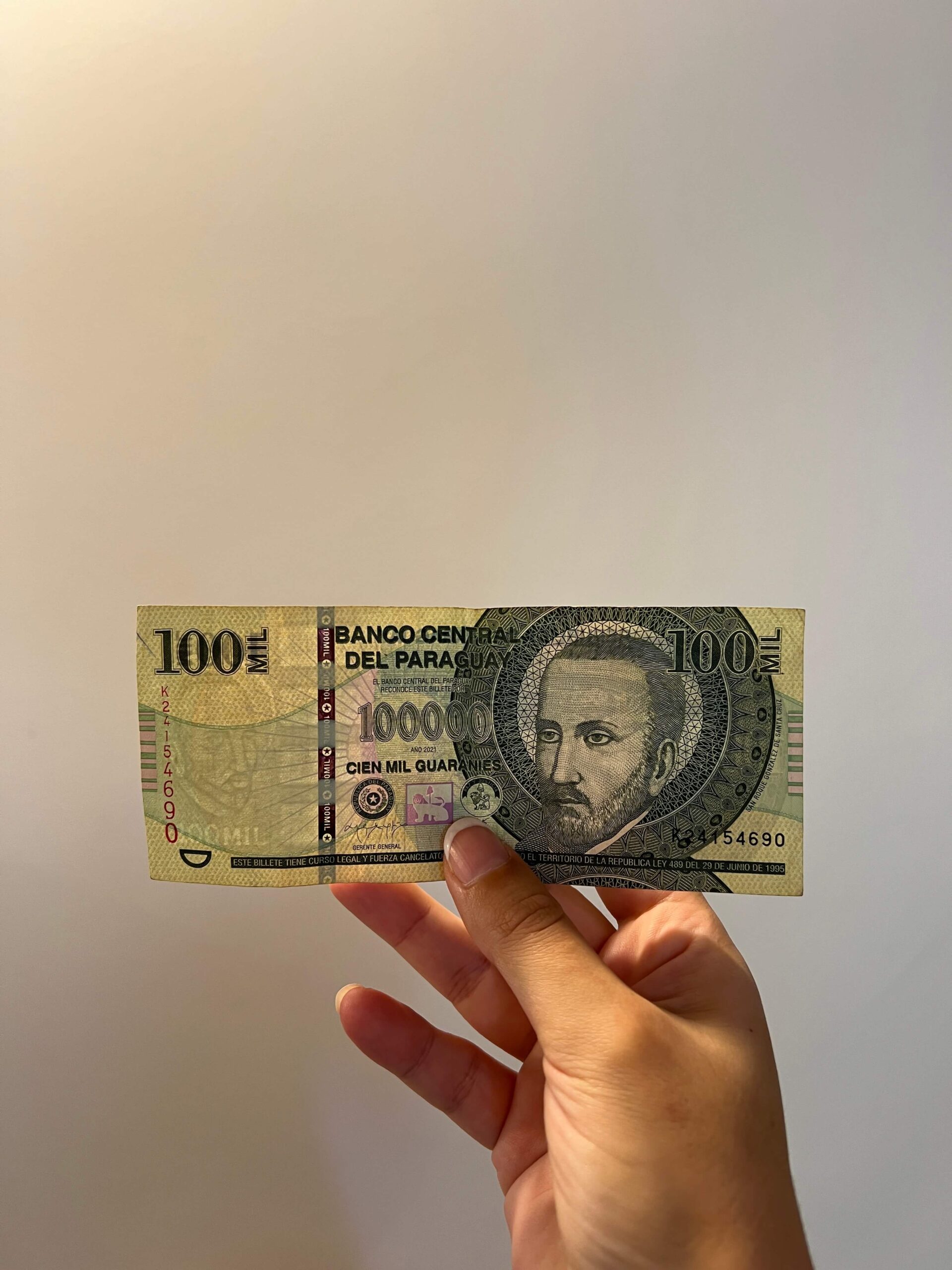
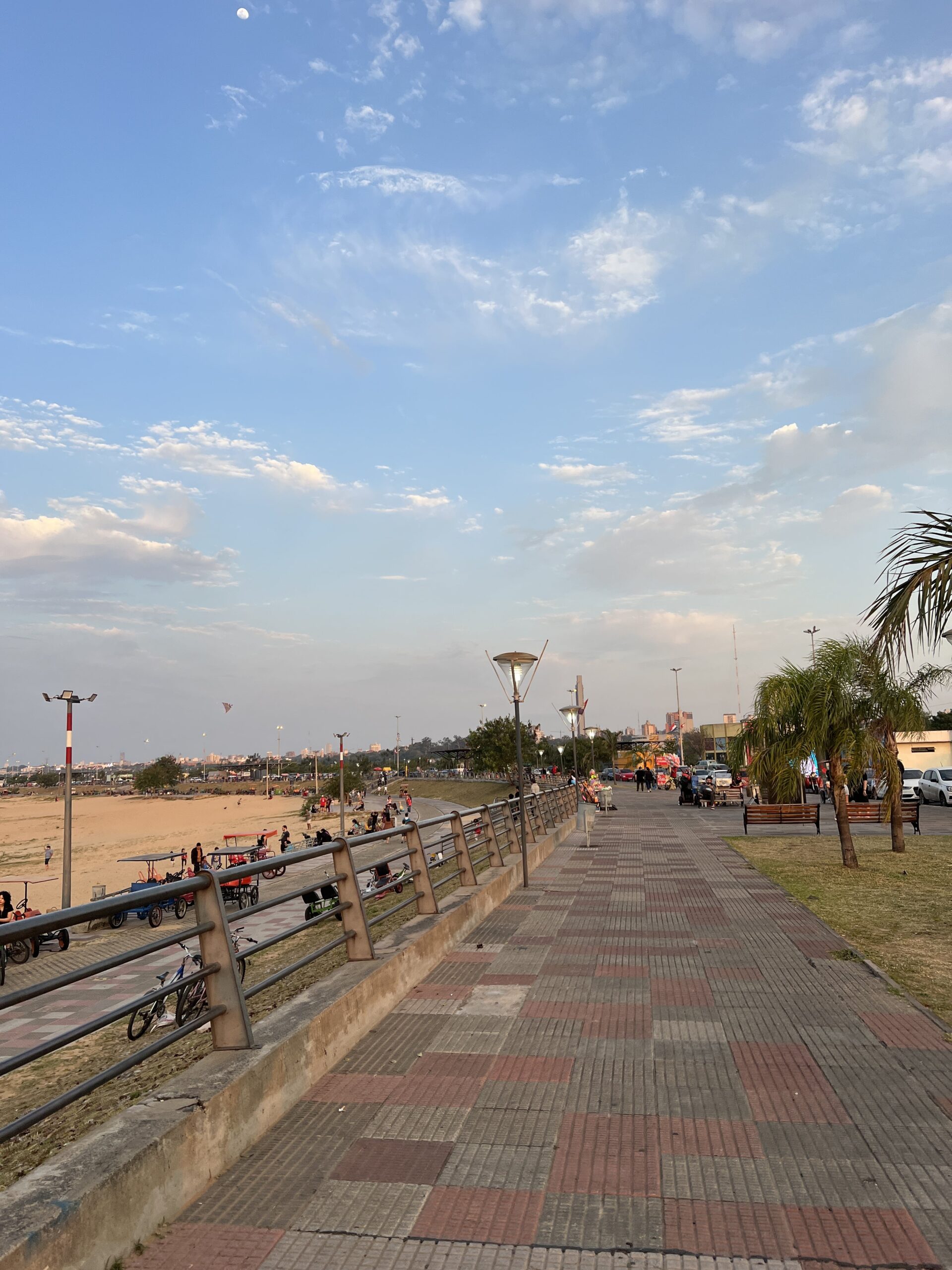
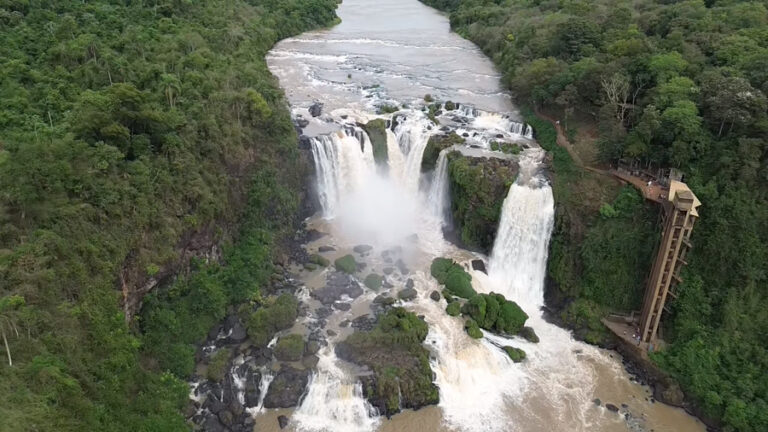
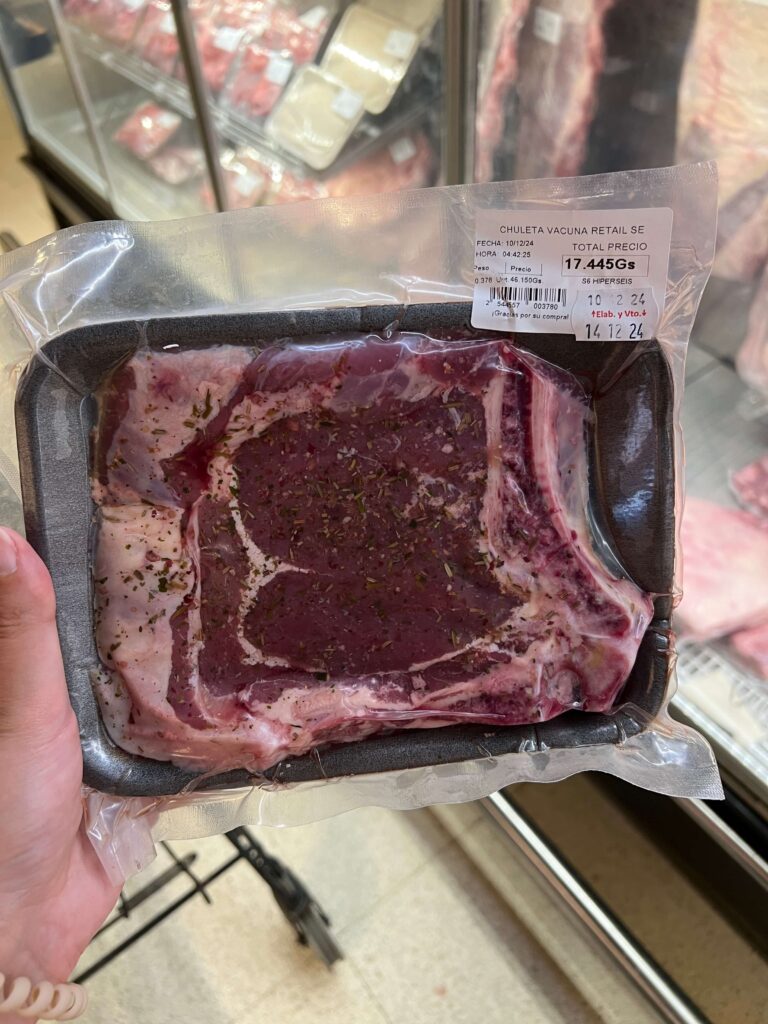
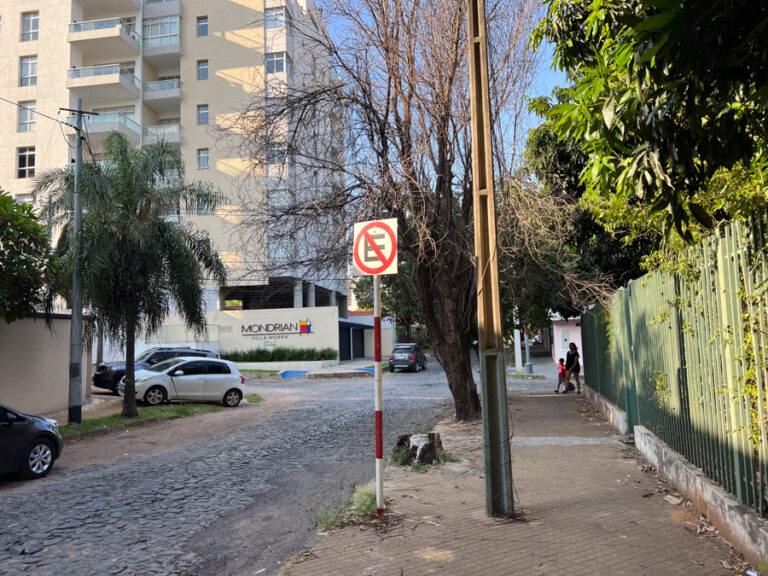
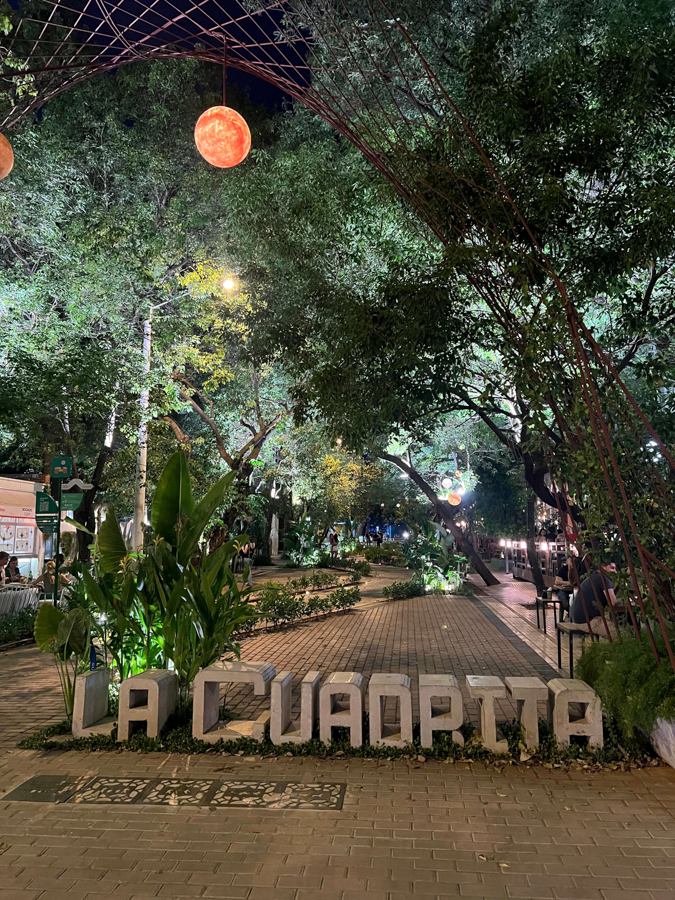
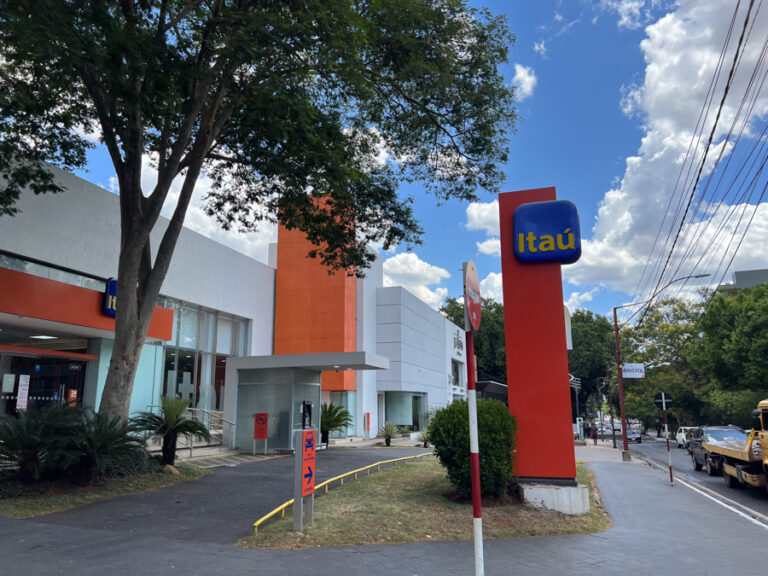
5 Comments